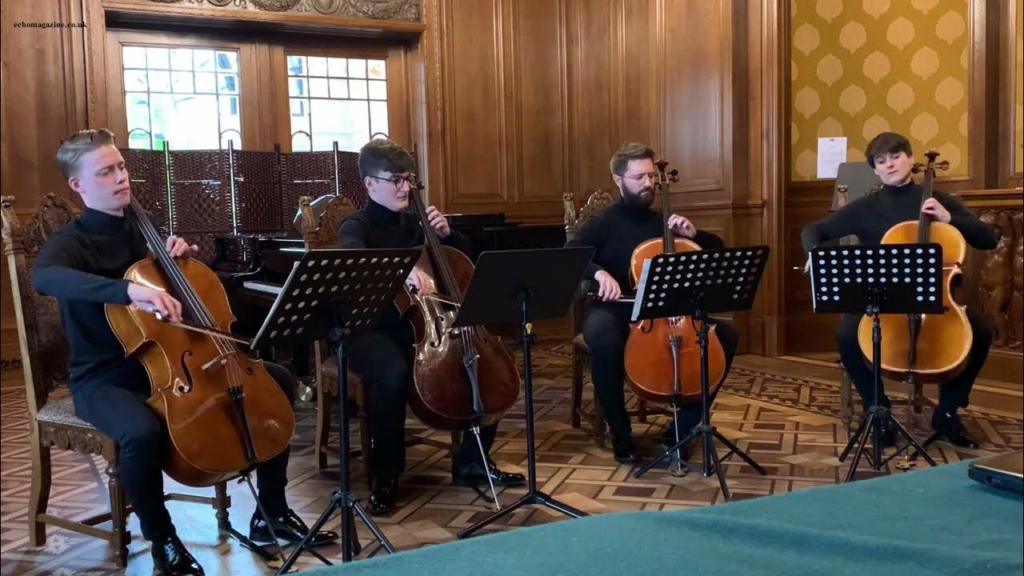Matz’s Cello Quartet in D Minor is a work of remarkable depth and emotional resonance, combining technical sophistication with a deeply expressive character. Known for its lush harmonies and intricate interplay of voices, this quartet has captivated audiences since its creation. When performed by the Atlanta Symphony Orchestra, the work takes on an even more profound significance, showcasing the ensemble’s artistry and deep connection to classical music.
The Origins of Matz’s Cello Quartet
Matz’s Cello Quartet in D Minor is often celebrated for its unique ability to balance technical challenges with musicality. While many details about the composer remain somewhat elusive, this piece has secured its place in the repertoire for its emotional intensity and technical brilliance.
The work reflects the Romantic era’s emphasis on drama, with soaring melodies and intricate counterpoint. Written for four cellos, the quartet demonstrates the instrument’s versatility, moving effortlessly between lyrical passages and dynamic, virtuosic sections.
The Role of the Cello in Classical Music
The cello has long been cherished in classical music for its rich, warm tones and expressive range. Unlike other string instruments, the cello possesses a deep resonance that can evoke a wide spectrum of emotions, from melancholy to joy.
In a quartet setting, the cello’s role is expanded, allowing for greater exploration of its capabilities. Matz’s Cello Quartet exemplifies this by creating a tapestry of sound that blends seamlessly while highlighting the individuality of each performer.
A Highlight of the Atlanta Symphony Orchestra
The Atlanta Symphony Orchestra has built a reputation as one of the leading orchestras in the United States, known for its dedication to presenting both classic and contemporary works. The ensemble’s performance of Matz’s Cello Quartet in D Minor underscores their commitment to excellence and innovation.
The Performance
The Atlanta Symphony Orchestra’s rendition of Matz’s Cello Quartet brings the work to life with stunning precision and heartfelt interpretation. Each cellist contributes a unique voice to the performance, resulting in a rich, textured sound that captures the essence of the piece.
The interplay among the four cellos is one of the most striking aspects of the performance. The musicians navigate the quartet’s intricate passages with ease, demonstrating their technical prowess and deep understanding of the music. The result is a performance that feels both spontaneous and meticulously crafted.
Key Movements in the Quartet
Matz’s Cello Quartet in D Minor is structured in several movements, each offering a distinct character and emotional journey.
- The First Movement: This opening section sets the stage with a dramatic introduction. The interplay of themes creates tension and anticipation, drawing the listener into the quartet’s narrative.
- The Second Movement: Known for its lyrical beauty, this movement highlights the cello’s singing quality. The harmonies are lush and evocative, providing a moment of introspection.
- The Third Movement: This energetic section features rhythmic complexity and dynamic contrasts. It serves as a showcase for the cellists’ technical skills, with fast-paced passages and intricate ensemble work.
- The Final Movement: The quartet concludes with a powerful and emotional finale. The themes introduced earlier in the work are revisited and developed, culminating in a dramatic resolution.
The Audience’s Reaction
The Atlanta Symphony Orchestra’s performance of Matz’s Cello Quartet has been met with critical acclaim. Audiences have praised the ensemble for their sensitivity and technical mastery, as well as their ability to convey the emotional depth of the work.
One of the most memorable aspects of the performance is the connection between the musicians and the audience. The quartet’s intimate nature invites listeners to engage deeply with the music, creating an experience that feels personal and transformative.
Why Matz’s Cello Quartet Stands Out
Matz’s Cello Quartet in D Minor is a unique work within the chamber music repertoire. Its use of four cellos creates a soundscape that is both rich and nuanced, setting it apart from more traditional string quartets.
The work’s emotional range is another defining feature. From moments of quiet reflection to passages of intense drama, the quartet offers something for every listener. Its timeless appeal ensures that it remains a favorite among performers and audiences alike.
The Atlanta Symphony Orchestra’s Role in Promoting Chamber Music
The Atlanta Symphony Orchestra has long been an advocate for chamber music, recognizing its importance in the broader classical music landscape. Performances like Matz’s Cello Quartet in D Minor highlight the orchestra’s commitment to showcasing diverse repertoire and providing opportunities for audiences to experience the intimacy of chamber music.
By presenting works like this quartet, the orchestra not only celebrates the richness of the cello’s sound but also underscores the enduring relevance of classical music.
Conclusion
Matz’s Cello Quartet in D Minor is a masterpiece that continues to captivate audiences with its emotional depth and technical brilliance. The Atlanta Symphony Orchestra’s performance of the quartet brings out its full beauty, demonstrating the power of music to connect and inspire.
Through their dedication to excellence, the musicians of the Atlanta Symphony Orchestra offer a performance that honors the spirit of Matz’s work while creating a unique and memorable experience for their audience. This performance serves as a reminder of the cello’s versatility and the enduring appeal of chamber music, ensuring that Matz’s Cello Quartet remains a cherished part of the classical music repertoire.
